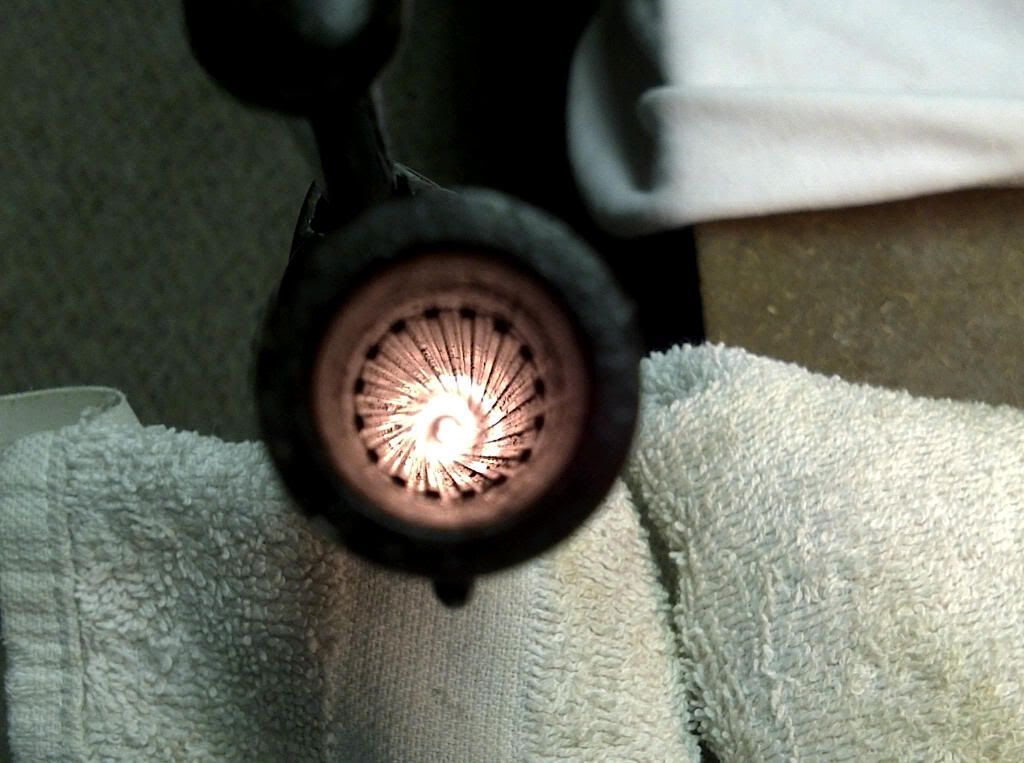steved
40 Cal.
- Joined
- Feb 11, 2004
- Messages
- 253
- Reaction score
- 20
I shot my US Model 1819 Hall Rifle at the range for the first time yesterday. This particular rifle was made in 1826 in the Harper's Ferry arsenal.
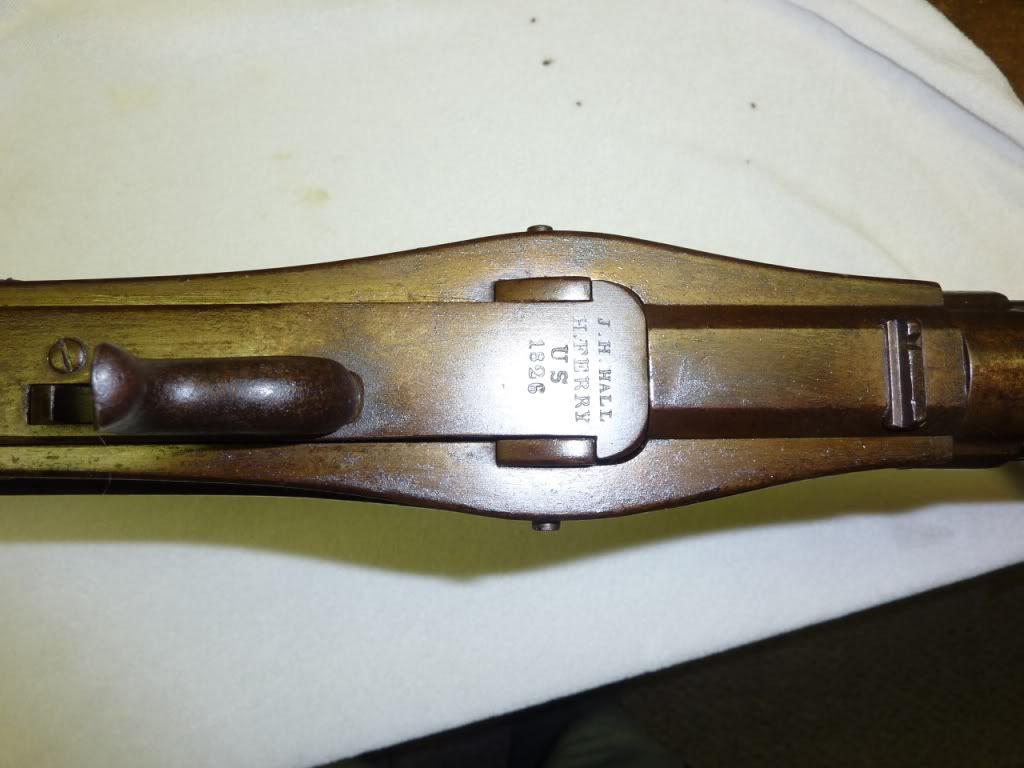
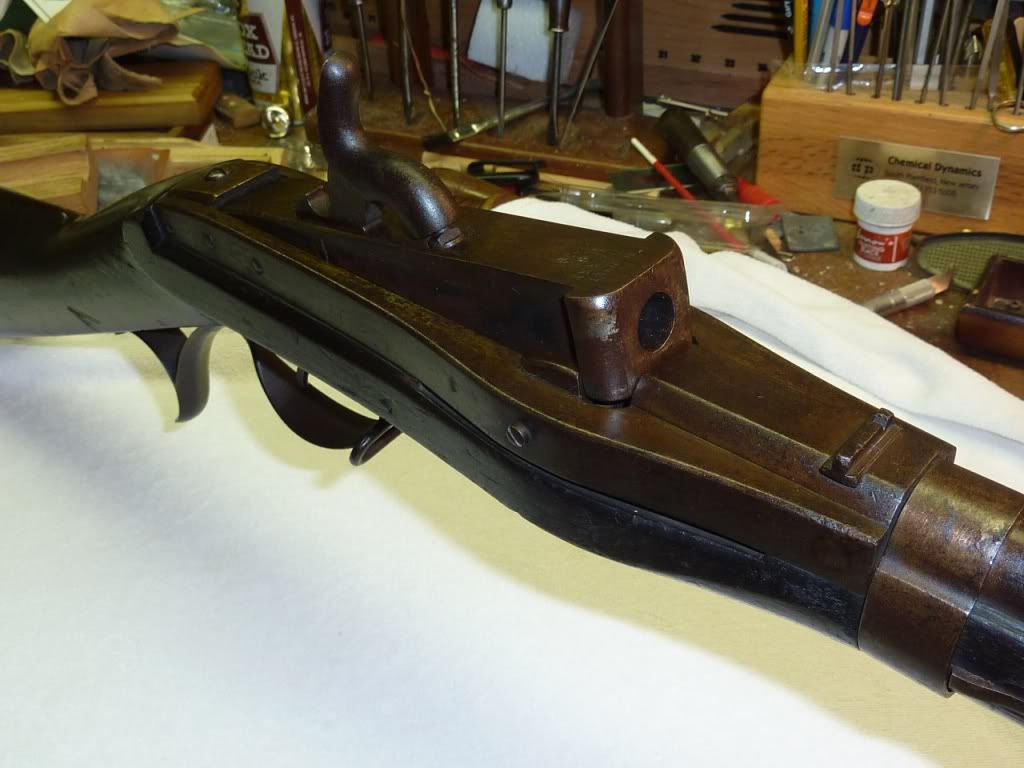
The load I used was 50gr FF (Goex) and roundballs cast from a .525 Jeff Tanner mould. Most of balls dropped from the mould at .527. Because the breech block loading chamber is significantly wider in diameter than the ball, as well as the first two inches of the breech end of the barrel, I wrapped the balls in scraps of paper torn from a brown lunch bag to prevent the ball from rolling down into the bore and creating a dangerous obstruction. This replicated the paper cartridge that was originally used.
The target distance was only 25yds, to make it easier to locate shots since I had no idea where this thing would shoot. I must admit I closed my eyes and ducked a little when I pulled the trigger on my first shot, praying that the 186yr old breech block would hold together. I had no reason to doubt that it would because there is a significant amount of steel surrounding the chamber in the breech block and careful inspection revealed no visible cracks. Same can be said for the breech end of the barrel. Considering the weight of the gun, the 50gr load barely kicked at all and everyting held together. I was sure to keep my left forearm away from the breech area due what I've read about the escaping gas at the junction of the breech block and barre. The rifle shot a bit high to the right, as shown in the below target. I did pull two shots to the left, probably the result of sight picture. The notch in the rear sight is quite wide and it's easy to line up the front post off center. Also below are photos of my son and I shooting the Hall, in which you can see the escaping gas around the breech. It was not as bad as I was expecting.
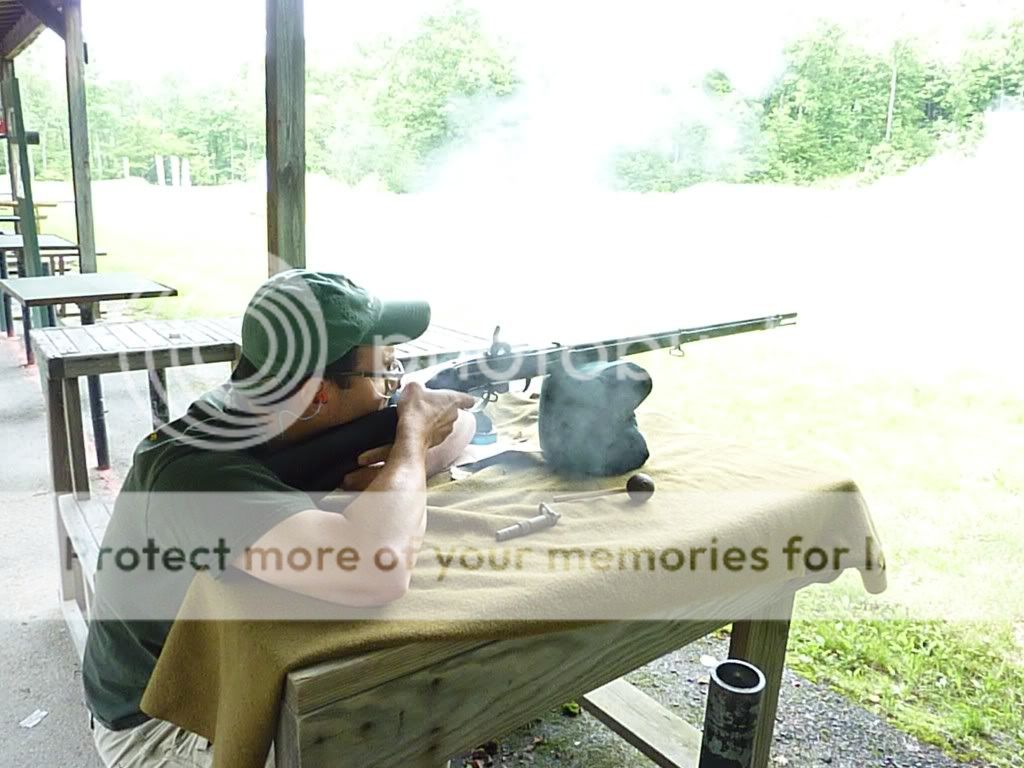
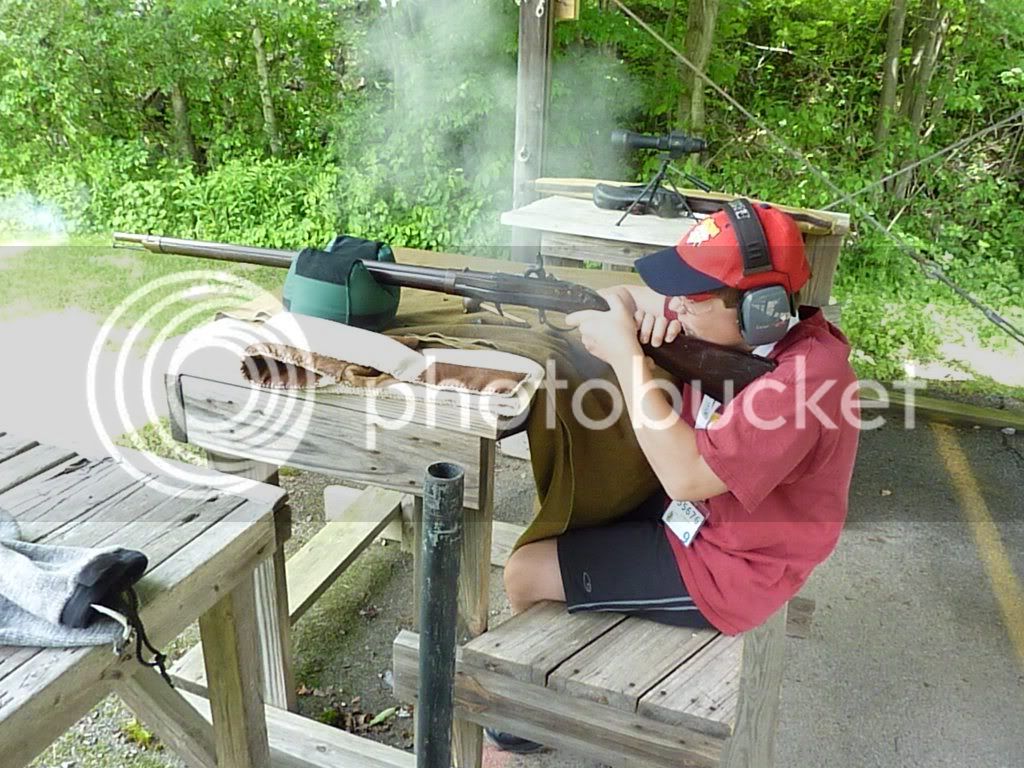
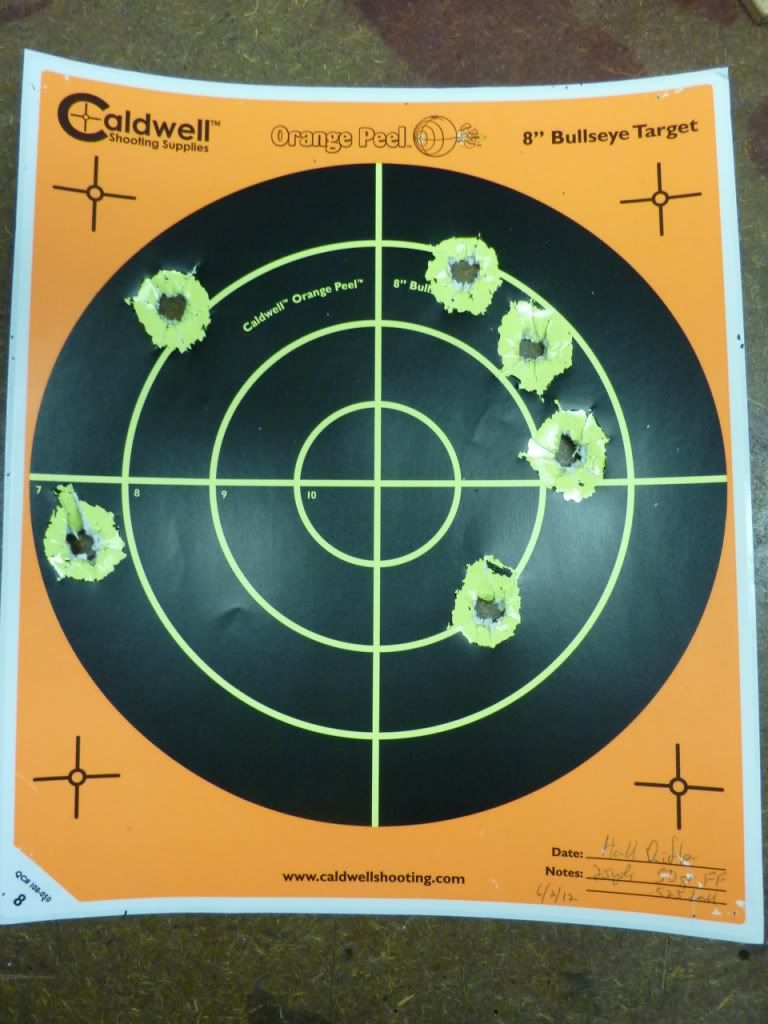
Some might question the wisdom of shooting an antique rifle like this. I purchase my old US military firearms with every intention of shooting them, feeling the connection to soldiers from times gone by. I didn't mind cleaning the rifle after shooting it - more or less the same procedure as used on my "modern" flintlocks. As all forum members know, careful cleaning of BP guns after shooting is a labor of love that cannot be avoided. The below photo shows the breech block and barrel breech after shooting. When I was done cleaning there was no evidence of any damage to the original finish - a risk I was willing to take because I have no intentions of ever "flipping" this rifle to make money. It's destined to be passed down one day to the young man you see in the picture.
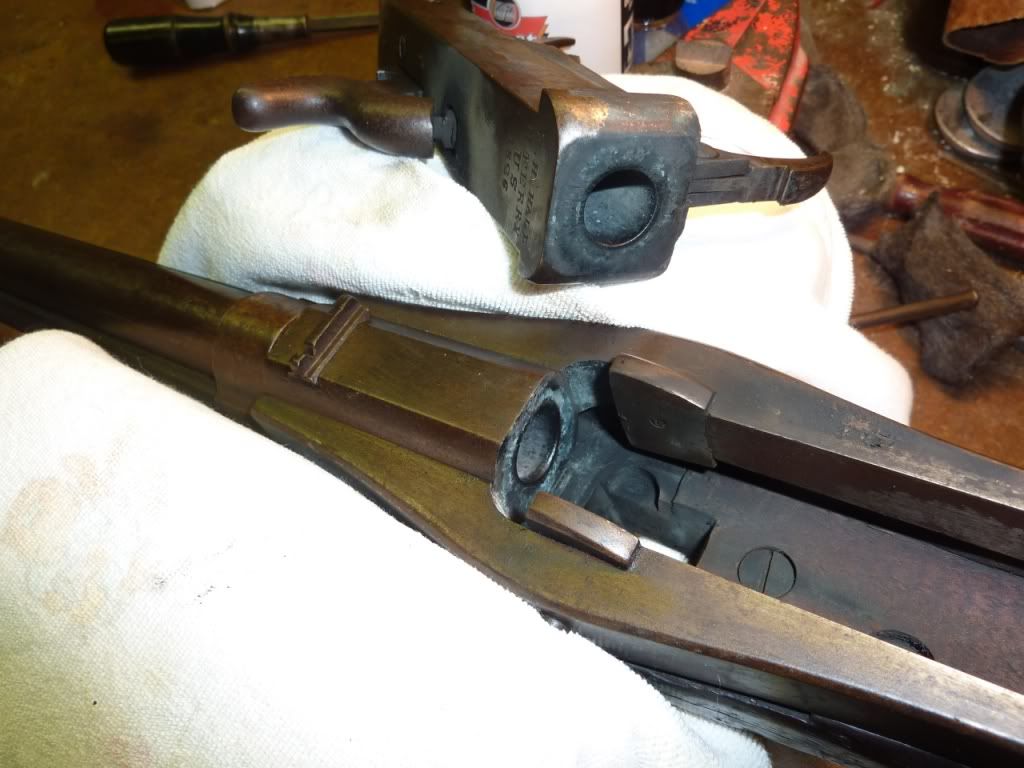


The load I used was 50gr FF (Goex) and roundballs cast from a .525 Jeff Tanner mould. Most of balls dropped from the mould at .527. Because the breech block loading chamber is significantly wider in diameter than the ball, as well as the first two inches of the breech end of the barrel, I wrapped the balls in scraps of paper torn from a brown lunch bag to prevent the ball from rolling down into the bore and creating a dangerous obstruction. This replicated the paper cartridge that was originally used.
The target distance was only 25yds, to make it easier to locate shots since I had no idea where this thing would shoot. I must admit I closed my eyes and ducked a little when I pulled the trigger on my first shot, praying that the 186yr old breech block would hold together. I had no reason to doubt that it would because there is a significant amount of steel surrounding the chamber in the breech block and careful inspection revealed no visible cracks. Same can be said for the breech end of the barrel. Considering the weight of the gun, the 50gr load barely kicked at all and everyting held together. I was sure to keep my left forearm away from the breech area due what I've read about the escaping gas at the junction of the breech block and barre. The rifle shot a bit high to the right, as shown in the below target. I did pull two shots to the left, probably the result of sight picture. The notch in the rear sight is quite wide and it's easy to line up the front post off center. Also below are photos of my son and I shooting the Hall, in which you can see the escaping gas around the breech. It was not as bad as I was expecting.



Some might question the wisdom of shooting an antique rifle like this. I purchase my old US military firearms with every intention of shooting them, feeling the connection to soldiers from times gone by. I didn't mind cleaning the rifle after shooting it - more or less the same procedure as used on my "modern" flintlocks. As all forum members know, careful cleaning of BP guns after shooting is a labor of love that cannot be avoided. The below photo shows the breech block and barrel breech after shooting. When I was done cleaning there was no evidence of any damage to the original finish - a risk I was willing to take because I have no intentions of ever "flipping" this rifle to make money. It's destined to be passed down one day to the young man you see in the picture.






